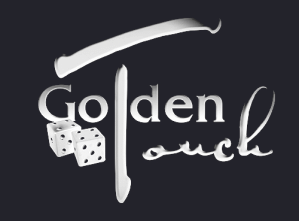
Golden Touch Craps
Here is a set of posts I wrote on the private members-only area of the GTC website. They continue the discussion of the 5-count along with some new themes that are introduced. Each subject can be viewed independently. But when combined together they form a three part series.
They are slightly technical in nature as they relate to the math of the game and the technique of controlled shooting. Yet, if one does not understand the precise subject matter offered, the arguments displayed will still be clear to the layman.
The first article is a response to the subject of "Charting." Charting is a concept some supposed "experts" fallaciously think can be applied to the game of craps. They think they can predict which numbers are likely to be thrown or when a table is going to be hot based on what numbers have been thrown in the past. I refer to this first article as "the law of large numbers" I am presenting in this three part series.
The second article is a response to an individual who tried to say that one of the methods of play (the 5-Count) recommended by Golden Touch Craps (the organization teaching controlled shooting) is a form of charting. I refer to this as "the 5-count is not a charting method" in the article I am presenting in this three part series.
In the third article I bring together some of the concepts presented in the first two posts. It references an interesting article written by mathematician, Dr. Don Catlin. In it he discusses some of the research he has done on these topics. I use his article to make the point of how my articles concur with what Dr. Catlin has presented in his article.
Part One: The law of large numbers
Part Two: The 5-count is not a charting method!
I do not believe the 5-count is a charting method in the same way that charting has been described in articles in the popular press or in web site threads. I am not trying to be argumentative or finicky about a choice of words. I am making a point about what I see as the difference between charting methods and the 5-Count.
First a quote from Frank Scoblete which can be found on the Wisdom Page on our private, members-only web site in the post: The 5-Count Criticism, Part 1
"The problem with attempts to "mathematicize" the 5-Count by using logic faces a big danger - the 5-Count isn't a mathematical system but a way to reduce betting on random rollers. As has been shown, the 5-Count will keep your body at the table without your money being at risk. You'll generally get the full comping time for your body time. That is an added benefit to using it with random rollers. The 5-Count can't give you an edge over random shooters."
Frank has had two mathematicians, Dr. Don Catlin and Dan Provonost verify the facts of what has been written about the 5-Count. They both agree that 57% of random rolls will be missed before completing the 5-Count. They have proved this mathematically from millions of simulations.
However this does not alter the house advantage on the other 43% of the random rolls remaining. Any money bet on that population of random rolls will have the same risk involved as if it were bet on the 57% that did not make the 5-count.
But it is also a fact that if any random shooter has a "hot roll" he will be in the 43% population that makes it past the 5-Count. This may be stating the obvious but it is a way to show the non-believers that the 5-Count will not cause them to miss a "hot roll." Since by definition a "hot roll" is a long roll and those not making it past the 5-Count do not have long rolls, you will not miss any "hot rolls" with the 5-Count.
Frank has stated/written on many occasions the 5-Count is a means of extending your time at the table so that you can get the dice to shoot more often. Your objective is to shoot the dice and bet more on yourself than on random shooters. By not betting on 57% of the random rolls you are saving that portion of your bankroll to both lengthen your time at the table so that you can shoot and have enough money to bet on yourself.
He has also stated/written it is better to not bet any money on random shooters at all. This will save you 100% of your bankroll to allow you to only bet on yourself. He realizes this may not be practical because some players like to bet on other shooters to feel that they are "in" the game. If he can get those players to 5-Count it is better than them betting on everyone.
This is why I do not view the 5-Count as a charting method.
? It has been proven mathematically to do what it says it does.
It does not propose to increase your chances of winning on random shooters.
I may be wrong but that is what I see as the main differences.
Part Three: Bringing it All Together... coming next month


